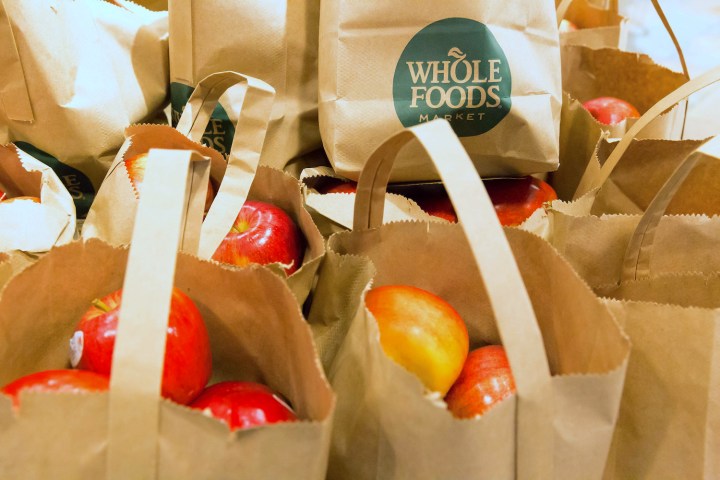
Shoppers at Amazon-owned Whole Foods may soon be waving their hands about at the checkout in order to pay for their items.
The company is currently testing scanning technology that can identify a human hand, sources claiming to have knowledge of the matter told the New York Post this week.
The system, code-named “Orville,” would match hand-related data with customer accounts, automatically deducting the cost of purchases as the shopper waves their five-fingered body part over the scanning machine.
The goal is greater speed and convenience, as shoppers wouldn’t need to fumble about for cash, a card, or a smartphone to pay.
Amazon wants to introduce the biometric technology to its Whole Foods stores from the beginning of next year, the Post said in its report.
Shoppers won’t be required to touch any surfaces when scanning their hand as the technology uses computer vision and depth geometry to collect all of the necessary data. It then links it to the customer’s account for quick and easy transactions at checkout.
Tests are currently being carried out at the company’s New York City offices, with Amazon employees using their hands to purchase food and drinks from specially designed vending machines.
The Post’s source said the system is accurate to within one ten-thousandth of 1%, adding that Amazon engineers are working to improve on the figure to further reduce the chances of any in-store payment problems.
When contacted by Digital Trends, Amazon neither confirmed nor denied that it was considering implementing such a system, saying only that it doesn’t comment on “rumors or speculation.”
Biometric technology
The use of biometric technology in retail and other services is actually nothing new. Some U.S. airports, for example, are currently testing facial-recognition systems, while China has been using it at some stores and subway networks to speed up services.
Amazon may be keen to install the technology at its Whole Foods stores within the next 12 months, but whether customers will want to use a part of their body to pay for goods is another matter, with some likely to cite privacy and security concerns as reasons to stick with more traditional methods of payment.
At Amazon’s checkout-free Go stores, which launched in 2018, you don’t even need to wave a hand to pay for your goods.
After identifying yourself via the Amazon app as you enter the high-tech store, tracking technology identifies what you put in your bag as you make your way around. Once you’re done, you can just walk straight out, with the cost of your selected items automatically charged to your Amazon account.
While Amazon could conceivably introduce the Go technology to its Whole Foods stores, kitting them out with all of the necessary technology would likely be too costly and disruptive, leading Amazon to trial a hand-based biometric system instead.
Editors' Recommendations
- Amazon tweaks in-garage delivery option, so now you might have to pay
- Whole Foods will start giving free face masks to all customers


